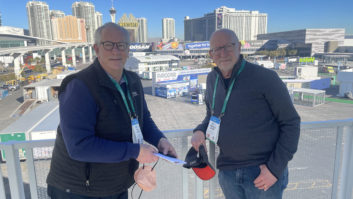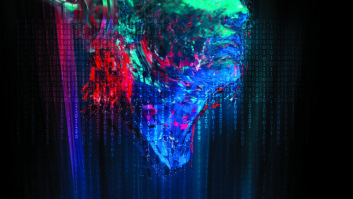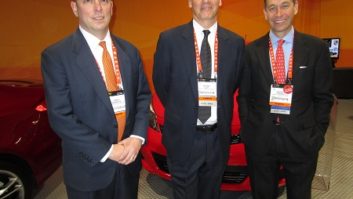
A GMC Acadia factory-installed HD Radio with Artist Experience.
Photo by Alan Jurison Unless you work directly with iBiquity to design an Artist Experience solution for your station, most details are left to a third-party vendor that handles them for you.
For many that might be good enough; but some users will want a true understanding of how the technology and system works — and how to troubleshoot any issues.
“Data services delivered over HD Radio are an exciting and growing development in the industry,” says Alan Jurison, senior operations engineer for Clear Channel Media + Entertainment in Cincinnati and a Radio World contributor.
Artist Experience is a particularly visible application of that concept. It uses some of the data bandwidth in the HD Radio stream to deliver graphical images synchronized with the audio. This involves sending relevant images of the current song on the air, such as album cover art.
Jurison will speak about technical details of AE on the Sunday morning of the NAB Show. He plans to define the technology and promises a look at current and planned receivers that support this technology.
Details of AE implementation are important to users to know about. For example, he points to importer and exporter configurations.
“Having been part of the implementation of Artist Experience on nearly 400 stations at Clear Channel, a key takeaway for any group owner considering this technology is to standardize software versions, configuration settings and, if possible, importer/exporter hardware, to enable rapid mass deployment and support,” he said.
Also, there’s a new importer software program written by iBiquity that schedules the images; it is called Multiport Synchronous/Asynchronous Client, or MSAC. Jurison will discuss the types of messages that a station’s Artist Experience solution needs to send to the MSAC.
“Pre-Sync messages allow MSAC to schedule image transfers into the future, and Sync messages tell MSAC that the song has just started to schedule an image resend shortly after the song has started.”
Also on tap are timing requirements to get the images transferred in time before the song starts, to ensure the image is synchronized with the audio and provide the best experience to listeners. Further topics include how receivers obtain and store the image before display, and some of the caching methodologies used by various manufacturers. His presentation also notes third-party Artist Experience providers that can assist stations in implementing it.
“Automotive OEM (factory-installed) HD Radios with Artist Experience will be very common in a few years,” he said. “It’s important that your company creates a strategy to implement this technology.”











